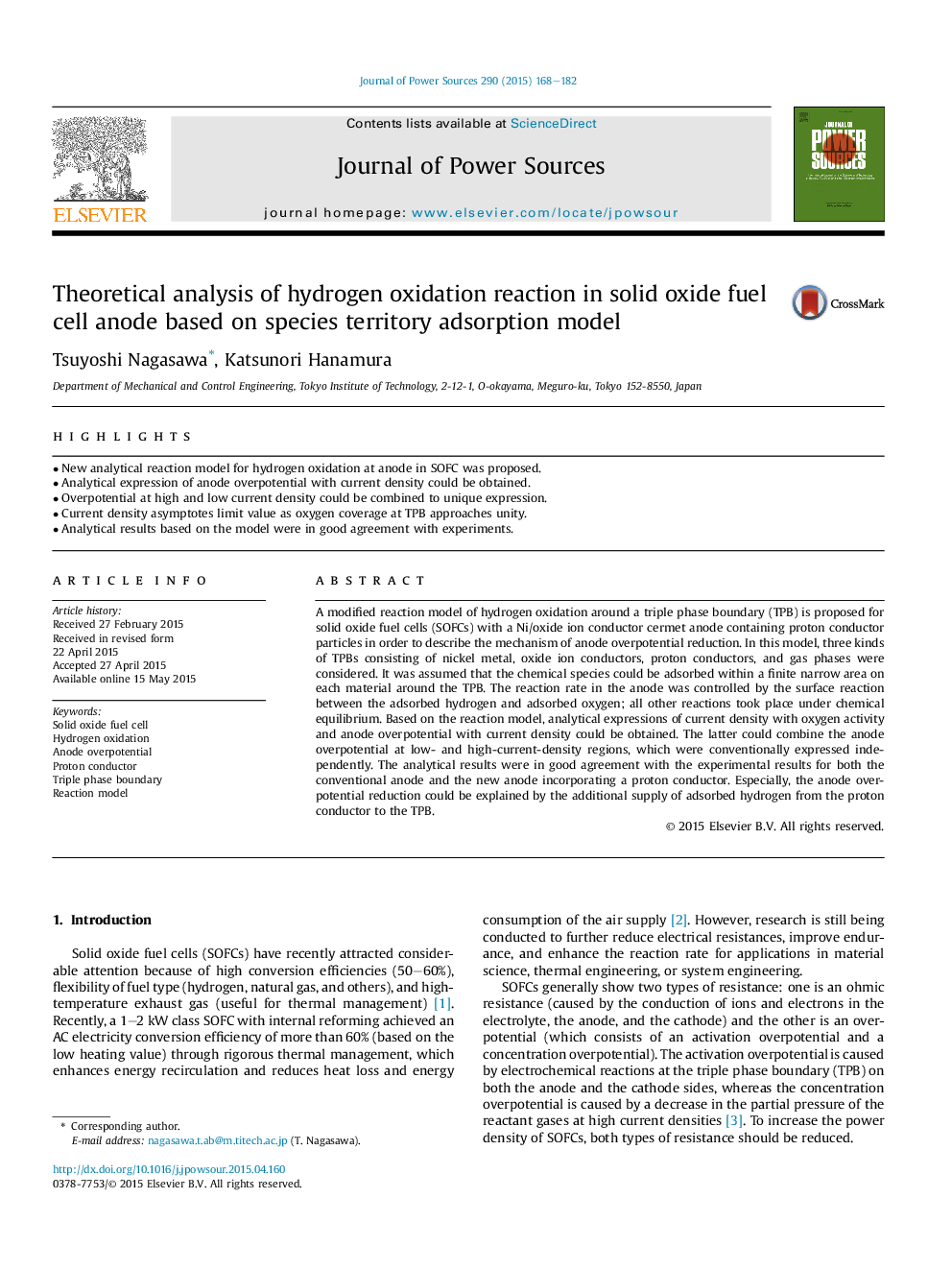| Article ID | Journal | Published Year | Pages | File Type |
|---|---|---|---|---|
| 1286073 | Journal of Power Sources | 2015 | 15 Pages |
•New analytical reaction model for hydrogen oxidation at anode in SOFC was proposed.•Analytical expression of anode overpotential with current density could be obtained.•Overpotential at high and low current density could be combined to unique expression.•Current density asymptotes limit value as oxygen coverage at TPB approaches unity.•Analytical results based on the model were in good agreement with experiments.
A modified reaction model of hydrogen oxidation around a triple phase boundary (TPB) is proposed for solid oxide fuel cells (SOFCs) with a Ni/oxide ion conductor cermet anode containing proton conductor particles in order to describe the mechanism of anode overpotential reduction. In this model, three kinds of TPBs consisting of nickel metal, oxide ion conductors, proton conductors, and gas phases were considered. It was assumed that the chemical species could be adsorbed within a finite narrow area on each material around the TPB. The reaction rate in the anode was controlled by the surface reaction between the adsorbed hydrogen and adsorbed oxygen; all other reactions took place under chemical equilibrium. Based on the reaction model, analytical expressions of current density with oxygen activity and anode overpotential with current density could be obtained. The latter could combine the anode overpotential at low- and high-current-density regions, which were conventionally expressed independently. The analytical results were in good agreement with the experimental results for both the conventional anode and the new anode incorporating a proton conductor. Especially, the anode overpotential reduction could be explained by the additional supply of adsorbed hydrogen from the proton conductor to the TPB.
